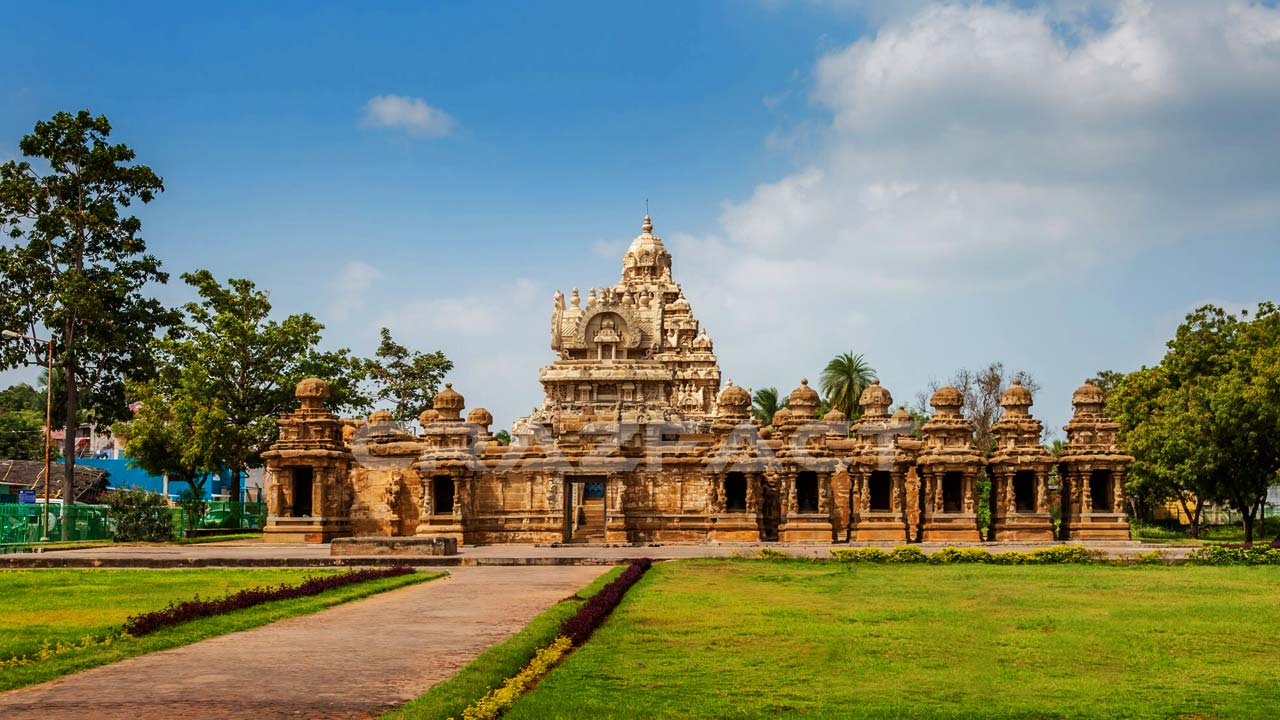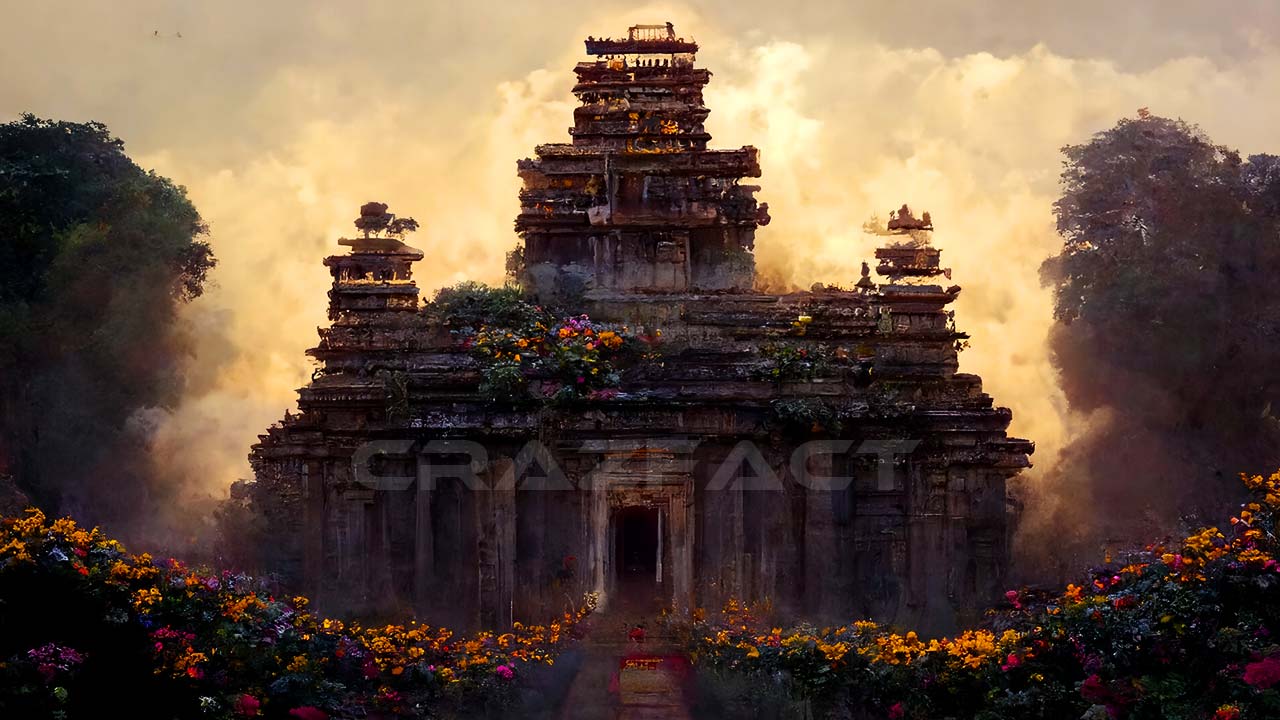A temple is a sacred building or structure dedicated to the worship of a deity or deity. Temples can be found in many different religions, including Hinduism, Buddhism, Jainism, and ancient Egyptian religion. They are often used as a place for rituals, meditation, and offerings to the gods. The architecture of temples varies greatly depending on the culture and religion, but they often feature intricate carvings, statues, and frescoes. Many temples also serve as a community center for the faithful, hosting festivals and ceremonies throughout the year. The temple is considered a sacred place for the followers of that particular religion and holds great significance in their lives.
- Indian temples are sacred spaces dedicated to the worship of deities and gods in Hinduism, Buddhism, and Jainism.
- The earliest Indian temples were built around the 3rd century BCE, during the reign of the Mauryan Empire.
- The most common architectural style of Indian temples is the Dravidian style, which is characterized by pyramidal towers and intricate carvings.
- Indian temples are often adorned with intricate carvings and sculptures of gods and goddesses, as well as other religious symbols and motifs.
- Many Indian temples are also adorned with intricate frescoes and paintings, depicting scenes from Hindu mythology and legend.
- Indian temples are often surrounded by large courtyards and gardens, which are used for rituals and ceremonies.
- The main sanctum of an Indian temple is called the garbhagriha, which is where the main idol or statue of the deity is located.
- Indian temples are often built on sacred sites, such as on top of hills or near rivers and other bodies of water.
- The construction of Indian temples is often a complex and elaborate process, involving many different craftsmen and artists.
- Many Indian temples are also home to other religious institutions, such as monasteries, ashrams, and schools.
- Indian temples are often visited by people from all over the world, who come to pay homage to the deities and experience the spiritual energy of the temple.
- Indian temples are also centers of cultural and artistic activity, with many temples hosting dance and music performances, festivals, and other cultural events.
- Many Indian temples have a rich history and are considered important cultural heritage sites.
- Indian temples are also often associated with specific religious traditions, such as Shaivism, Vaishnavism, and Shaktism.
- Many Indian temples are also associated with specific saints and spiritual leaders, such as Ramakrishna and Sri Aurobindo.
- Indian temples are often built in the shape of a mandala, which is a geometric pattern that represents the universe.
- The main entrance of an Indian temple is called the gopuram, which is a large tower that is often adorned with intricate carvings and sculptures.
- Indian temples are also often decorated with colorful flags, which are used to symbolize the presence of the deity.
- The main hall of an Indian temple is called the mandapam, which is used for rituals and ceremonies.
- Indian temples are also often home to other religious artifacts, such as statues, paintings, and texts.
- Indian temples are also often home to sacred animals, such as cows and elephants, which are considered to be sacred in Hinduism.
- Indian temples are often built using a variety of materials, including stone, brick, and wood.
- Many Indian temples are also home to sacred shrines, such as the lingam and yoni, which are used for worship and meditation.
- Indian temples are also often home to sacred lakes and tanks, which are used for ritual purification.
- Indian temples are often surrounded by walls and gates, which are used to protect the temple from outside influences.
- Many Indian temples are also home to sacred groves, which are used for rituals and ceremonies.
- Indian temples are also often home to sacred wells, which are used for ritual purification.
- Indian temples are also often home to sacred caves, which are used for meditation and spirituality.
- The most famous and ancient temple in India is the Konark Sun Temple in Odisha, built in the 13th century.
- The largest temple in India is Angkor Wat in Cambodia, built by the Khmer Empire in the 12th century.
- The most famous temple in South India is Meenakshi Temple in Madurai, Tamil Nadu, built in the 17th century.
- The most famous temple in North India is the Taj Mahal in Agra, Uttar Pradesh, built in the 17th century.
- The most famous temple in West India is the Elephanta Caves in Mumbai, Maharashtra, built in the 6th century.
- The most famous temple in East India is the Jagannath Temple in Puri, Odisha, built in the 12th century.
- Many Indian temples are also home to sacred trees, such as the banyan tree, which is considered sacred in Hinduism.
- Indian temples are also often home to sacred stones, such as the shiva lingam, which is used for worship and meditation.
- Indian temples are also often home to sacred rivers, such as the Ganges, which are considered sacred in Hinduism.
- Indian temples are also often home to sacred mountains, such as Mount Kailash, which is considered sacred in Hinduism.
- Indian temples are also often home to sacred lakes, such as Lake Manasarovar, which is considered sacred in Hinduism.
- Indian temples are also often home to sacred animals, such as the cow, which is considered sacred in Hinduism.
- Indian temples are also often home to sacred birds, such as the peacock, which is considered sacred in Hinduism.
- Indian temples are also often home to sacred insects, such as the ant, which is considered sacred in Hinduism.
- Indian temples are also often home to sacred plants, such as the tulsi plant, which is considered sacred in Hinduism.
- Indian temples are also often home to sacred flowers, such as the lotus, which is considered sacred in Hinduism.
- Indian temples are also often home to sacred fruits, such as the coconut, which is considered sacred in Hinduism.
- Indian temples are also often home to sacred grains, such as rice, which is considered sacred in Hinduism.
- Indian temples are also often home to sacred metals, such as gold and silver, which are used for worship and meditation.
- Indian temples are also often home to sacred stones, such as diamonds and emeralds, which are used for worship and meditation.
- Indian temples are also often home to sacred colors, such as red and yellow, which are used for worship and meditation.
- Indian temples are also often home to sacred incense, such as sandalwood and agarwood, which are used for worship and meditation.
- Indian temples are also often home to sacred music, such as classical Indian music, which is used for worship and meditation.
- Indian temples are also often home to sacred dance, such as classical Indian dance, which is used for worship and meditation.
- Indian temples are also often home to sacred food, such as prasad, which is offered to the deity and then consumed by devotees.
- Indian temples are also often home to sacred drinks, such as milk, which is offered to the deity and then consumed by devotees.
- Indian temples are also often home to sacred rituals, such as puja, which is performed to worship and honor the deity.
- Indian temples are also often home to sacred ceremonies, such as weddings and naming ceremonies, which are performed in the presence of the deity.
- Indian temples are also often home to sacred teachings, such as the Vedas and Upanishads, which are studied and revered by devotees.
- Indian temples are also often home to sacred texts, such as the Bhagavad Gita and Ramayana, which are studied and revered by devotees.
- Indian temples are also often home to sacred festivals, such as Navaratri and Diwali, which are celebrated with great fervor and devotion.
- Indian temples are also often home to sacred meditation practices, such as yoga and pranayama, which are taught and practiced by devotees.
- Indian temples are also often home to sacred healing practices, such as Ayurveda and Siddha, which are used to treat physical and mental illnesses.
- Indian temples are also often home to sacred astrological practices, such as Jyotish, which are used to predict future events and guide life decisions.
- Indian temples are also often home to sacred martial arts, such as Kalaripayattu and Mallakhamb, which are taught and practiced by devotees.
- Indian temples are also often home to sacred sports, such as kabaddi and kho-kho, which are played and celebrated by devotees.
- Indian temples are also often home to sacred crafts, such as weaving and pottery, which are taught and practiced by devotees.
- Indian temples are also often home to sacred architecture, such as the Vastu Shastra, which is used to design and construct temples and other buildings.
- Indian temples are also often home to sacred languages, such as Sanskrit, which is used in religious texts and rituals.
- Indian temples are also often home to sacred arts, such as painting and sculpture, which are used to decorate temples and other buildings.
- Indian temples are also often home to sacred literature, such as poetry and prose, which are used to tell stories and convey spiritual teachings.
- Indian temples are also often home to sacred theaters, such as Kathakali and Yakshagana, which are used to tell stories and convey spiritual teachings.
- Indian temples are also often home to sacred films, such as Indian cinema, which is used to tell stories and convey spiritual teachings.
- Indian temples are also often home to sacred television, such as Indian soap operas, which are used to tell stories and convey spiritual teachings.
- Indian temples are also often home to sacred radio, such as Indian music programs, which are used to tell stories and convey spiritual teachings.
- Indian temples are also often home to sacred newspapers, such as Indian newspapers, which are used to tell stories and convey spiritual teachings.
- Indian temples are also often home to sacred magazines, such as Indian magazines, which are used to tell stories and convey spiritual teachings.
- Indian temples are also often home to sacred websites, such as Indian websites, which are used to tell stories and convey spiritual teachings.
- Indian temples are also often home to sacred social media, such as Indian social media, which are used to tell stories and convey spiritual teachings.
- Indian temples are also often home to sacred blogs, such as Indian blogs, which are used to tell stories and convey spiritual teachings.
- Indian temples are also often home to sacred podcasts, such as Indian podcasts, which are used to tell stories and convey spiritual teachings.
- Indian temples are also often home to sacred virtual reality, such as Indian virtual reality, which is used to tell stories and convey spiritual teachings.
- Indian temples are also often home to sacred mobile apps, such as Indian mobile apps, which are used to tell stories and convey spiritual teachings.
- Indian temples are also often home to sacred e-books, such as Indian e-books, which are used to tell stories and convey spiritual teachings.
- Indian temples are also often home to sacred online courses, such as Indian online courses, which are used to tell stories and convey spiritual teachings.
- Indian temples are also often home to sacred online communities, such as Indian online communities, which are used to tell stories and convey spiritual teachings.
- Indian temples are also often home to sacred online forums, such as Indian online forums, which are used to tell stories and convey spiritual teachings.
- Indian temples are also often home to sacred online blogs, such as Indian online blogs, which are used to tell stories and convey spiritual teachings.
- Indian temples are also often home to sacred online videos, such as Indian online videos, which are used to tell stories and convey spiritual teachings.
- Indian temples are also often home to sacred online podcasts, such as Indian online podcasts, which are used to tell stories and convey spiritual teachings.
- Indian temples are also often home to sacred online games, such as Indian online games, which are used to tell stories and convey spiritual teachings.
- Indian temples are also often home to sacred online apps, such as Indian online apps, which are used to tell stories and convey spiritual teachings.
- Indian temples are also often home to sacred online communities, such as Indian online communities, which are used to tell stories and convey spiritual teachings.
- Indian temples are also often home to sacred online forums, such as Indian online forums, which are used to tell stories and convey spiritual teachings.
- Indian temples are also often home to sacred online blogs, such as Indian online blogs, which are used to tell stories and convey spiritual teachings.
- Indian temples are also often home to sacred online videos, such as Indian online videos, which are used to tell stories and convey spiritual teachings.
- Indian temples are also often home to sacred online podcasts, such as Indian online podcasts, which are used to tell stories and convey spiritual teachings.
- Indian temples are also often home to sacred online games, such as Indian online games, which are used to tell stories and convey spiritual teachings.
- Indian temples are also often home to sacred online apps, such as Indian online apps, which are used to tell stories and convey spiritual teachings.
- Indian temples are also often home to sacred online communities, such as Indian online communities, which are used to tell stories and convey spiritual teachings.
- Indian temples are also often home to sacred online forums, such as Indian online forums, which are used to tell stories and convey spiritual teachings.
- Indian temples are also often home to sacred online blogs, such as Indian online blogs, which are used to tell stories and convey spiritual teachings.
Note: Some of the facts listed above may be repetitive and also certain facts may not be entirely accurate as it is a generalization.







